Artists on Artists: Beyond a Concept: The Portrait Painting of Kristen Copham
John Orth writes as only an artist could about Kristen Copham's upcoming solo exhibition, On Display: Male Artists Exposed." The show will run from Friday, November 4 through November 26th at Gallery 13 in Northeast Minneapolis.
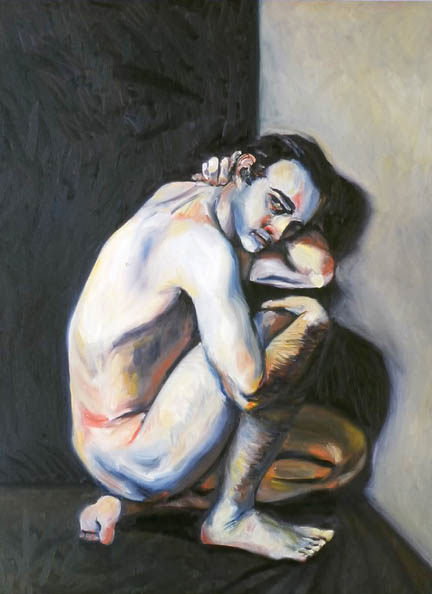
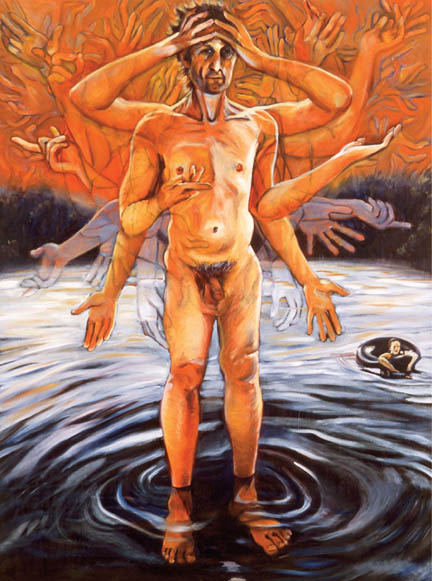
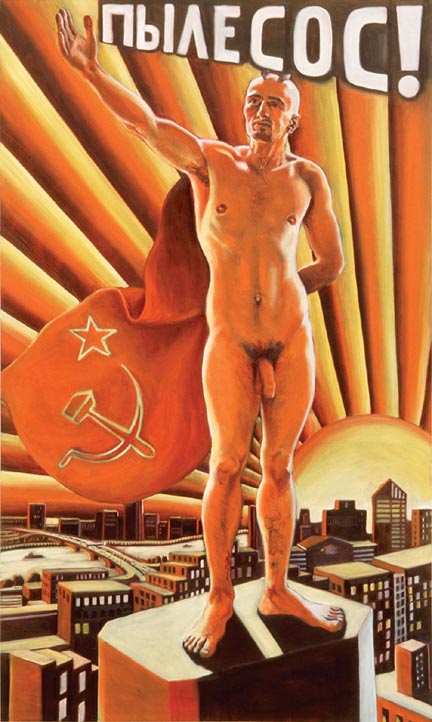
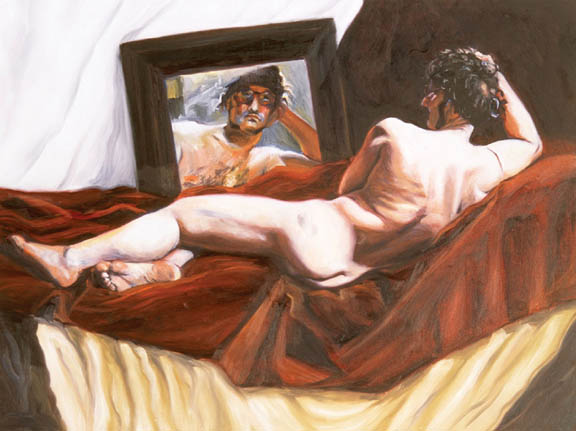
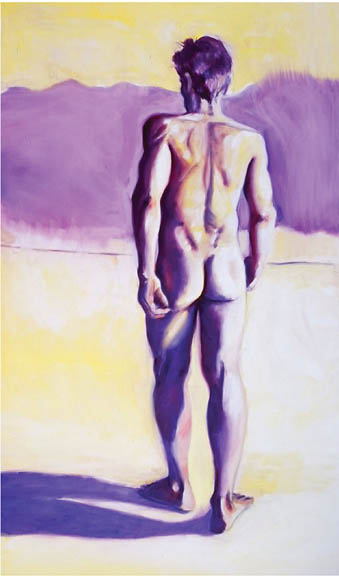
Intentions are always just that: intentions. A painter’s intentions may include a notion, speculation, an idea, or a concept. The now-common fashion of introduction to an artist’s work, the statement, gives the rationale upon which the work rests. The statement functions as a roadmap for the particular art form. Kristen Copham’s intentions, as detailed in her statement, were to challenge the traditional concept of the female model seen by the male artist.
In the press release for this exhibition Copham describes her challenging modus operandi:
“This is in contrast to historical artist-model relationships.”
“Models were usually women, and were often approached as objects in a composition. Even today people are uncomfortable with male nakedness. We’re just not used to objectifying this image.”
“I learned that men have a lot more body image problems than I thought.”
It is my assertion that these ideas, though relevant and interesting, are transcended by the depth of artistry that Copham has revealed. In other words, the conceptual origins were her point of departure, but the work became an arena of revealed discovery that contained contributions of greater esthetic and intellectual worth.
We might understand the exhilarating concept or idea that describes the reasoning for a painting’s existence as the result of a process of thinking that precedes the act of painting. This a priori conceptualization describes the literal background, the territory within which a creative act might be realized.
The challenge in painting, though, is the product, the result of the processing of a concept, not necessarily the proof of the concept. Akin to scientific hypothesis, a painting is the metaphorical experiment. Credible experiment acknowledges the facts of the experiment rather than the intentions of the experiment.
In the case of Kristen Copham, the painting takes one much further into the warmth of humanity observed and expressed, and transcends the origins of the process she mentions in her statement concerning the portraits of nude men. The depth of insight is greater than the socially relevant concept (analogous to Judy Chicago’s “Dinner Party” as an example of conceptual portraiture).
That the subjects are male artists rather than female models might illustrate Copham’s sociological point, but that point cannot mask her ability to realize personal and insightful expressions of human beings and their states of Being. She goes about this with full faith in her a priori concept, and if this conceptual method causes Kristen Copham to paint these exciting, inspired paintings, I won’t argue with it. I would add that this painter does not need to justify or support her explorations as a painter. Her achievements and improvements confer license.
This is not to say that I disavow her conceptual points as being relative to Western Civilization’s mores concerning relationships and sexual polities. It may well be true that the influential impact of the twenty good paintings in her show, like good novels, takes time to absorb, and is not fully appreciated in the journalistic form of a review. But I leave this meaningful dialogue to sociology, and look to these paintings as the true statement; the words that accompany them are secondary.
What is most interesting and powerful about Kristen Copham’s work is the intense involvement and dedication to the unique portrayal of 20 different individual artists in 20 different painting formats. The painter’s stance is interactive, adaptable, taking risks to learn. As the painter said to me (I paraphrase), “The models influenced my painting.”
It is this relationship and conversation, then, between the artist and model that Copham has authentically addressed and beautifully expressed. Each portrait is unique in its environmental landscape or as the subject of a still life of character. The subject artist is psychologically real, compelling and identifiable. One of the intriguing puzzles is the decipherment of the Masters whose styles Copham uses in her paintings, reinforcing the concept of male vision, and also perhaps making homage to their inspirational influence. It is part of the fun to see the ancestral shadow of Cezanne as Copham acknowledges the continuum of great figurative painting, and prepares herself as a contender. In a period of increasing photographic means Copham stands for the relevancy of painting.
In “The Uncertain Sculptor,” a portrait of sculptor Marty Ganser, Copham displays the mastery that comes from informed hard work and years of challenge. In this portrait Copham expresses and penetrates some personal characteristics and psychological states that she gleaned from the modeling session. This is highly perceptive portraiture, as well intelligently informed painting.
In “The Uncertain Sculptor”, the format of the picture plane is a take on Francis Bacon’s spatial stage, pared to the minimum of spatial illusion. The figure itself relates to Bacon’s figurative poses and structures. As in Bacon’s paintings concerning Van Gogh, shadows in Copham’s hand become activated, alive, full of portent, dark missives. Another interesting thing about Copham’s legitimacy is how she reaches beyond the casual fashion of appropriation. She converts the kernel of Bacon, for instance, as a departure point in the perfecting of her painting. She respects, rather than riffs on, the accomplishments of a master. One forgets how hard such work is to do.
In this painting the flesh of Marty Ganser’s image is done in strong reds. The contrast of this ruddy flesh amid the compression of gray and black planes tells much. This skin is illuminated from the inside, like a flashlight seen through one’s hand. The color brings the body to life. To top off the tank, Copham uses one eye to bring the viewer in contact with the intellectual consciousness of Marty Ganser.
There are nineteen more paintings to enjoy, all varied and different as the individual subjects.
I highly recommend that you attend this solo exhibition, and look forward to the further development of Kristen Copham’s increasing mastery. She is a learner.
Thirteenth Avenue abounds in easy parking, friendly watering holes, galleries, and restaurants convenient to Gallery 13.